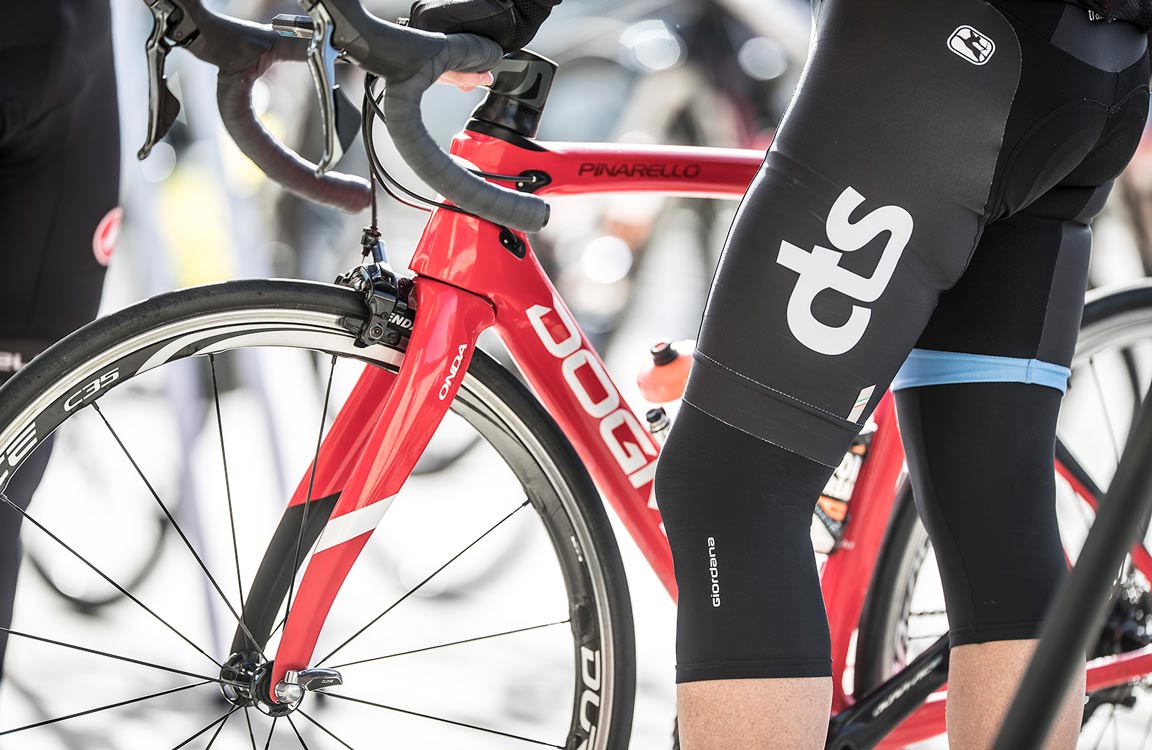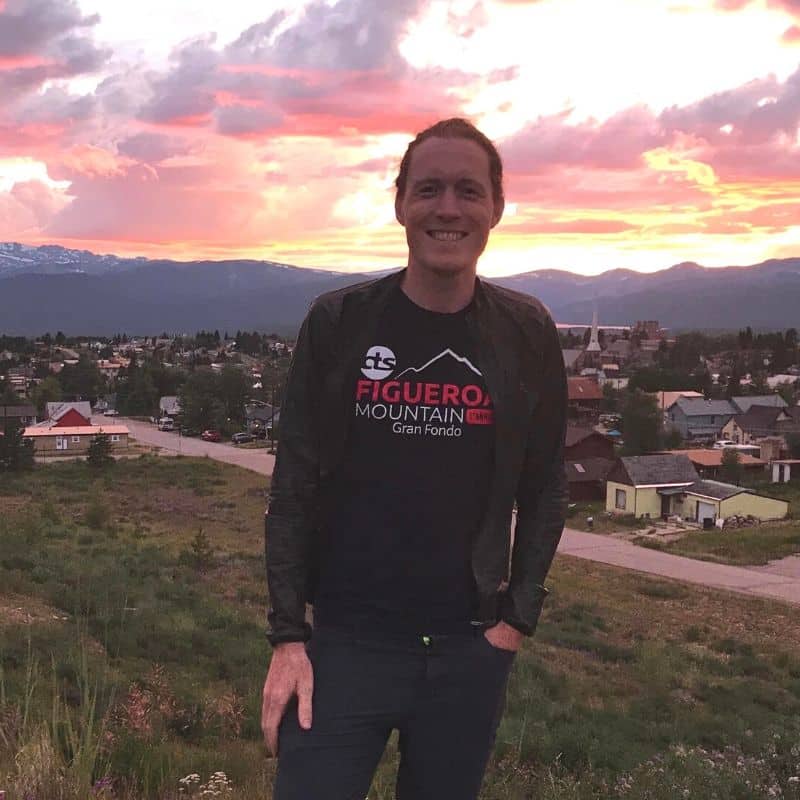
Bike Fit: 3 Overlooked Signs You Need a Bike Fit
By Reid Beloni,
CTS Senior Coach
Retül Level 1 Fit Technician
In a previous blog we talked about some common problems we see with bike fit, and discomfort and injury are obvious signs you should address bike fit issues. Many times, however, cyclists who would benefit from a bike fit appointment are not experiencing pain. The body has an amazing ability to compensate for less-than-optimal movement patterns, but riding with a poor-but-functional fit often means you’re working too hard to produce too few watts. Here are three commonly overlooked signs you should get your bike fit checked.
You See Uneven Wear and Tear
Your bike is symmetrical. It is designed with bars of equal curve, crank length, and stance. Everything about it is equal right to left. The body is asymmetrical. There are differences in strength, flexibility, structure and function, both front to back and right to left. I have had to explain this to my fit clients many times and they seem hesitant to accept that they aren’t perfectly balanced. You never were perfectly balanced, and if you think about it, you’ve probably bounced off the ground a few times in your life, too. Those impacts and compensations changed your symmetry. The goal of bike fitting isn’t to force your body into symmetry, but rather adjust the bike to compensate for your unique asymmetry.
Signs of asymmetry we can look for include: uneven wear on the saddle, hoods, bar tape, cleats, insoles, and/or crank. Basically, anything you touch or any contact point with the bike can bear the signs of asymmetry. If the wear on these areas vary from right to left, it could be a sign that you are asymmetrical and that we need to account for that.
You might need different amounts of arch or forefoot support on each foot. Heels hitting your cranks may require us to adjust your cleats or add some spacers. If your feet are rotated out, we aren’t going to set up your cleats straight to force you into alignment, but rather set them up to match the natural rotation of your feet, which will feel straight and centered for you! Uneven saddle wear is typically a sign you have a strength or flexibility imbalance that is causing you to pedal slightly askew, rather than an indicator of an anatomically asymmetrical pelvis. However, saddle wear most commonly indicates that a rider is on the wrong width or shape saddle. The wrong saddle won’t support both sit bones and can often cause a rider to pick their favorite side, leaving the other unsupported and hanging off in space.
It’s been a few years
Maybe your gear isn’t necessarily falling apart, but it’s been 5 years since you last had a bike fit and you have changed. Or like I said earlier, maybe you’ve bounced off the ground a few times! The body changes. Your flexibly and strength changes, at times getting stronger or more flexible, and other times less. Your job and lifestyle changes. I coach an athlete who retired and started losing weight unexpectedly, and a few weeks later we realized it was because instead of sitting at a desk all day, he was walking the dogs, doing yard work, and organizing the house.
You may race mainly crits one year, and fondos the next. Comfort for all day riding will likely warrant a more relaxed position than one designed for a high-intensity hour of power. Changes in your activity level, lifestyle, job, or goals can be very good reasons to take a second look at your bike position.
When you are new to cycling, you may might want to update your fit every year over the first 2-3 years. I’ve observed that newer riders have less range of motion in their fit, and they also have less proprioception to the mechanics of bike riding. Their initial fit should put them into a position that accounts for their current flexibility. As they increase their mileage their flexibility and strength will change and so will their fit. As they rack up miles they also become more aware of their body and its mechanics, which often warrants updating a fit.
On the other side of the spectrum, riders who have been at it for a long time might not be aware of the very slow changes that are happening in their body. Just as you don’t see your hair grow day to day, you may not notice how age, lifestyle, body weight, and seemingly insignificant changes all accumulate into needing an updated fit.
► Free Cycling Training Assessment Quiz
Take our free 2-minute quiz to discover how effective your training is and get recommendations for how you can improve.
You Have a DIY Bike Fit
More information is available at our fingertips, and in our pockets, than ever before in human history. You can Google and Youtube all kinds of information about training, nutrition, recovery, and even bike fit. There are advanced tools you can use to create your own DIY bike fit. The basics of bike fit are not that difficult to figure out, and people can generally create a reasonable approximation of a good fit. But is that good enough?
A professional bike fit is one of the best investments of your time and money. You already spend hundreds of hours each year training to increase your power output and optimize your performance. In some cases, I’ve had athletes train for six months to achieve a 20-watt increase in sustainable climbing power. I’ve also had athletes gain 20 watts of sustainable power through changes to bike fit – with no changes to their fitness level.
With a DIY bike fit, you just don’t know how much potential performance you’re missing out on. Your fit could be great, and if it is I’m not going to change anything just for the sake of justifying your visit (no fitter should). Confirming a position is optimal removes doubt and helps improve an athlete’s confidence. But if you’re leaving watts on the table and we can increase your power output or improve your comfort by tweaking your position, you will be able to take full advantage of all those training hours.
► FREE Mini-Course: Learn How to Maximize Your Limited Training Time
Learn step-by-step how to overcome limited training time and get faster. Walk away with a personalized plan to increase your performance.
"*" indicates required fields


Comments 12
Looking to buy used Pro Pinarello F 10 Dura Ace di need 51-53cm frame max
I think the comments are good. There are only 4-5-people in the US I’d refer my clients to for fitting. I believe every fit requires a follow-up, and a positive outcome guarantee. Not saying a cyclist with complex issues should expect 100% resolution, but setting and meeting expectations is a reasonable ask. I see 600-900 clients each year, and my refunds average 2-3-annually — almost exclusively due to our personalities not meshing.
Unless the fitter fails to provide an opportunity to test the fit, people who get bike fits and aren’t happy with them didn’t participate correctly themselves. The goal is not to obtain some kind of perfect correspondence between the dimensions of the bike and the dimensions of our bodies, but rather to find an arrangement that provides a combination of comfort and efficiency – something we desire – as we move about. A good fit for a person would vary as much as that person’s goals – desires and priorities – varies. A professional fitter will know what might be achieved by making various adjustments, but the most important part of a bike fit is not the measurements, it’s the testing and the feedback: try this. Ride for a while. How does that feel? You can’t just get some measurements and expect them to work because they came from an expert, you have to try them and provide feedback. The fitter can observe things you can’t see or measure, but the fitter can’t know whether you’re satisfied unless you say so.
I echo the other comments. Four pro fits done by trained, experienced fitters in the last five years. I learned things with each fitting but none of them helped me feel very comfortable on the bike. So back to DIY fitting for me.
I’ve had 6 fittings over the past 15 years. Every one made me LESS comfortable (and slower)! If you look at the measurements for them, you’d swear they were for 6 different people!!! (Saddle height ranged from 80 – 82cm; saddle setback 6 – 12cm; bar drop 5 – 10cm; bar reach 52 – 58cm.) I’ll stick with the DIY, thank you!
Nice article. I echo the last comment. Where to find a fitter who is competent. I try to support local bike shops but question their expertise when it comes to this.
Thanks, Terry
Reid is the best.
Great fitting and always willing to help. All you DIY fitters out there, do yourself a favor and find a certified fitter. You’ll be glad you did.
Reid did the fit on both of my new bikes. He did a fantastic job.
Very good article especially right from the start. My left hip hurts more than my right. My right toes hurt more than my left, and my right shoulder is the first one to head for the barn! I used a crank power meter that would measure wattage on both sides. I would achieve 50/50…on occasion! Usually varied 2-4%. Definitely an asymmetrical body!
Yeah, excellent information.
But where do I find a bike fitter with your kind of knowledge and expertise? Way too many hacks out there.
Help???
Jean Weiss
Jean, you can go to Retul website to find a Retul fitter near you. retul.com
THANKS. Will try that.